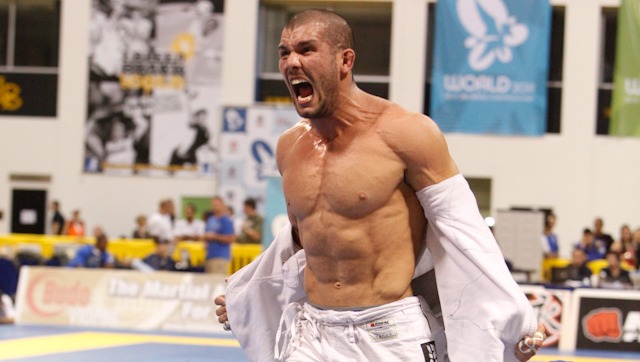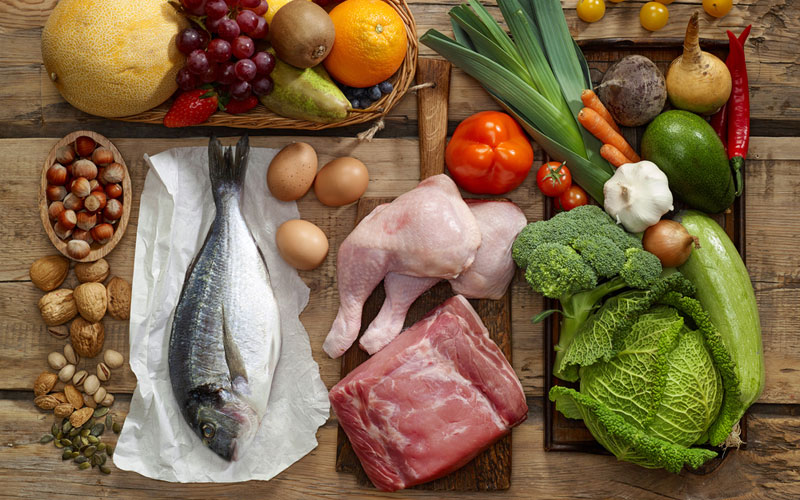
Brazilian Jiu-Jitsu is a sport with lots of categories of competition. People that decide to put their skill to the test on the mats are divided according to multiple factors. First and foremost is the level of experience, which is determined by the belt rank. Next, competitors are assigned to a kids, juvenile, adult or master division according to age. The male and female distinction is futile to point out as it is more than obvious. The last parameter of grappling competition are weight classes. When someone wants to compete in BJJ, apart from age, sex, and experience, they need to fall within the bounds of a BJJ weight class as well.
Under IBJJF rules, there are 9 weight classes, without counting the absolute, in which competitors can grapple. Most of these are 10-20 lbs apart, meaning there is not much of a weight difference between neighboring weight classes. Most people, however, look for the advantage of being as heavy as they can within a BJJ weight class, so they very often resort to cutting weight before competing. However, this practice is a very difficult one and can have major health implications when done incorrectly. For those that are in between weight classes, especially those in the Masters’ divisions, are much better off looking to go up a BJJ weight class than constantly cut weight before competing. Just like with cutting weight, nutrition plays the crucial role in “bulking up” for a higher weight class.
The Safest Way To Cut Weight For BJJ: https://bjj-world.com/cutting-weight-for-bjj/
Calorie Requirements For Moving Up A BJJ Weight Class
The fuel for any athletic endeavor is food. When we’re talking about grappling martial arts, nutrition is even more important. For a better understanding of nutrition and the energy balance in our bodies, we need to break food down into it’s building blocks. The main building blocks f any diet are macronutrients that come in the form of protein, fat, and carbohydrates. These macronutrients are aided by a host of micronutrients like vitamins, minerals, fiber etc.
The ways in which our bodies process macronutrients are different but the goal is the same. While in a biochemical sense all these macronutrients are broken down int very different compounds, energetically they all come down to calories. Calories are a unit measure of energy that food provides for our metabolism to burn. Intake of calories is essential for our bodies daily functions and vary in accordance. When we’re laying around in bed our bodies require much less energy than we’re at work followed by a BJJ class.
The intake of calories determines metabolism. In that sense, less caloric intake than what the body spends means that you’re going to lose weight. More calories than the body can spend activate the body’s mechanisms for reserves, and the likely outcome is gaining weight. The math is simple in theory. In practice, however, the quality of calories, along with macronutrient ratio is very important.
Energy intake plays a crucial role in maintaining or gaining muscle mass. When looking to go up a BJJ weight class by gaining lean and functional weight, energy balance must be in the surplus. A positive energy balance is more important than the amount of ingested protein. In order to discover your optimal calorie needs, you can use this free calculator.
Optimal Protein intake
After a suitable energy intake has been established, protein intake needs to be determined. As such total protein intake is the most important nutritional factor for muscle hypertrophy. When looking to go up a BJJ weight class, grapplers should aim for an intake between 1.8-2.5g/kg per day. This, however, is only a rule of thumb and does not factor in individual needs. Leaner individuals require a higher intake of protein while in a calorie deficit and vice versa. These intakes are in line with what most people looking to build muscle already consume.
Once you establish your suitable energy and protein intakes, it is time to do some fine tuning to your nutritional plan. The quality, distribution, timing, and type of protein are all important in balancing a muscle-building diet. Remember, that as a grapplers, we’re not just looking to bulk up, but build functional muscle that’s only going to take you up in BJJ weight class, not four. The goal is to maximize the hypertrophic response to training not get bloated.
How Much Protein You Really Need
On top of the factors above maximizing muscle protein synthesis has by far the greatest benefit for improving muscle gain. Keeping protein synthesis in the muscles high revolves around the leucine content in meals. Also, important is the frequency of which protein meals are eaten.
When ingesting protein, a threshold amount of leucine of 2-3 g total is enough to result in increased muscle protein synthesis. This roughly equates to 25-35g of leucine-rich protein sources like whey, eggs, and meat. As an example, 35 grams of egg protein provide roughly 3g of leucine, which is on the upper end of the recommended threshold. This quantity is likely to maximally stimulate protein synthesis. Furthermore, protein intake of 25-35g at every meal is advised. The lower quantity is more appropriate for smaller and/or female grapplers, while the larger is for bigger individuals.
From a timing standpoint, eating meals spaced every 3-4 hours would optimize protein synthesis in the muscles in a 24-hour period. Spacing meals like this allow blood amino acid levels to drop. This results in repeated stimulation of protein synthesis by subsequent meals. Therefore, the optimal meal frequency is 4-5 protein-rich meals per day, at even intervals.
Protein Quality And Timing
Protein quality generally refers to how good (or poorly) our bodies make use of a certain protein source. Moreover, protein quality refers to how well the essential amino acid profile matches the requirements of the body. The digestibility of the protein and bioavailability of the amino acids also playing a role.
For non-vegetarian/vegan grapplers, protein quality is generally not a concern due to the relatively large daily availability. As such, the timing and frequency of intake are the most important factors in regard to protein consumption.
Within the meal frequency advised above, consumption of two maximal doses of protein appears to be best for muscle growth. Ingestion should be around the training time, separated by no more than five hours. For example, you ate a meal an hour before a two-hour long training session. This leaves a two-hour window to ingest 25-35g of protein after training. There’s no need to slam a protein shake immediately after training. You can take your time and build up to the next BJJ weight class by eating real high-quality food.











































